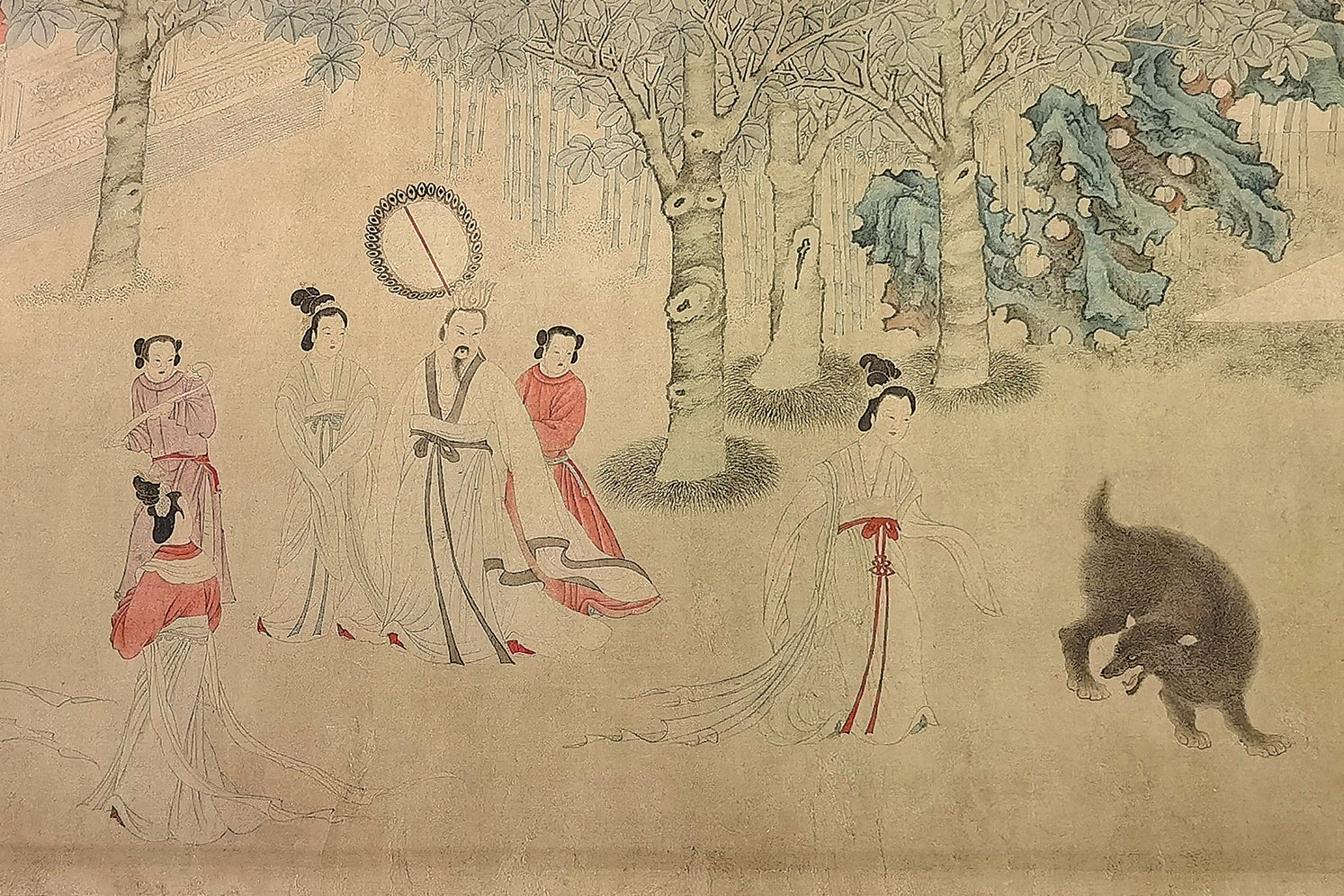Picturing past perfection
THE ARTICLES ON THESE PAGES ARE PRODUCED BY CHINA DAILY, WHICH TAKES SOLE RESPONSIBILITY FOR THE CONTENTS

In the late Eastern Han Dynasty (24-220) period, Cai Wenji, a talented poet and musician, was captured by nomads during a war, and gave birth to two children far away from home.
Years later, when the woman finally got the chance to return home, she faced a tough choice, as the journey back meant saying farewell to her children. She shared this poignant experience through her art, becoming a symbol of resilience and the enduring power of culture.
Centuries earlier, when a Western Han Dynasty (206 BC-AD 24) emperor was frozen in his tracks by an approaching bear, his entourage was too frightened to attempt a rescue, apart from one person: Feng Jieyu, a heroic concubine, who stepped forwards to protect him.
The actions of these women earned them honour. Names of many other honourable and heroic women have also been remembered down the generations.
Images of these icons are now on display in a new exhibition by the Palace Museum in Beijing, Timeless Beauties: Figure Paintings from Across the Ages in the Palace Museum Collection.
Eighty-three pieces of art celebrating the spirit and beauty of Chinese women can be seen in the Wenhua Dian (Hall of Literary Brilliance) in the former imperial palace, which is also known as the Forbidden City. Thanks to vivid artistic portrayals, centuries after these women died, their legends continue to resonate and inspire.

In the past, paintings depicting female figures, broadly referred to as shi’nyu tu or “court lady paintings”, were a classic genre, with a long history and influence on traditional Chinese art. According to Xing Lunan, an associate researcher at the Palace Museum’s department of paintings and calligraphy, and curator of the exhibition, the genre evolved, capturing the characteristics of each era.
“These paintings not only created idealised images of women, but also reflected the changes to their social status and living conditions over time, influenced by shifts in politics, customs, and trends,” Xing says.
For example, during the Six Dynasties period — which refers to a period from the 3rd to 6th centuries when the southern part of China was ruled by six dynasties — delicate, refined images were preferred, echoing the then noble taste for inner peace.
Gu Kaizhi, an Eastern Jin Dynasty (317-420) master of painting, was responsible for the milestone Admonitions of the Instructress to Court Ladies, which celebrates honourable women in history and reveals a concern for the politics of his time.
Meanwhile, the graceful, voluptuous depictions of woman during the Tang Dynasty (618-907) may reflect the social prosperity of the time.
The dignified elegance of the Song and Yuan (1271-1368) paintings, and the delicate and gentle Ming (1368-1644) and Qing (1644-1911) paintings, are both characterised by notable features.
“Early paintings centred around women often served an admonitory function to set moral standards,” Xing explains. “After the Tang, the genre of painting beauties became a refined form that depicted the graceful demeanor of women that are pleasing to the eyes.”
Literature, legends, and folklore contribute to another major theme in the shi’nyu tu. Following the rise of urban culture, art gradually expanded beyond the aristocracy and literati and became more public-oriented.
The curators seek to remind visitors that it’s not only female celebrities who deserve to be remembered. Many ordinary women, whose names have not been etched in history, also speak for their gender.
This is why a section of the exhibition is dedicated to reflect the different facets of the everyday life of women in history. They raised silkworms and wove. They enjoyed leisure and played on swings. They teased birds, and had fun with their children.
In addition to artefacts and panels of text, multimedia displays and creative light and shadow installations have been incorporated.
“A thought-provoking atmosphere is created through poetry, imagery, and silhouettes, helping visitors to appreciate the women depicted in the paintings,” said He Xie, the exhibition designer.

Bookmark popover
Removed from bookmarks